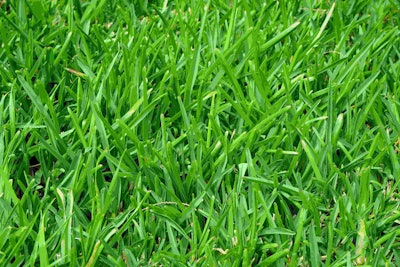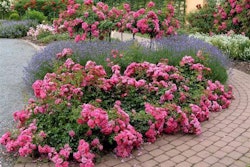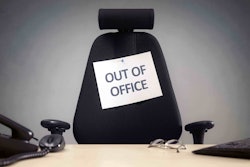
The importance of timing
The planting of seeds must be in alignment with the natural periods of the most active growth. A wide majority of cool-season grasses see the most vigorous growth during periods of cooler temperatures. This includes:
1) Kentucky bluegrass
2) Tall fescue
3) Perennial ryegrass
4) Fine fescue
These grasses will flourish in the fall from northern climates to the transition zone. Any region where there is an overlap of warm and cool weather the seeds should be planted in the fall. Taking advantage of the natural growth peak of the seeds ensures the seeds will germinate and establish at a much faster pace. This will provide customers with a full, rich lawn.
The advantages
There are several advantages when landscapers plant seeds during the cooler weather of the fall. During the earliest part of the fall the soil remains warm from the sun throughout the summer months. The combination of cool evenings, moderate temperatures and warm sun enable the seeds to germinate at a faster rate. This establishes the grass seed by providing the best possible conditions.
Along with this there are less weeds in fall for the seeds to compete with, giving them a better chance of survival.
Proper lawn care requires constant soil moisture for the newly planted seeds. Planting in the fall offers excellent soil moisture. This is due to the greater precipitation in the fall. This lessens the chances of the seeds becoming too dry. Landscapers often do not have to perform any additional watering during this time. The issue can be nearly eliminated with grass and seed products created to conserve water or for areas prone to droughts.
When the temperature of the soil is between 50 and 65 degrees Fahrenheit the seeds will germinate a lot better. This closely corresponds with the air temperature during the day of 60 to 75 degrees Fahrenheit. Landscapers can easily eliminate any guesswork regarding the exact temperatures with a soil thermometer.
When the seeds are planted during the fall there is enough time for them to become well rooted and established prior to the natural stresses becoming a factor. The type of stress varies according to the type of grass, the conditions, and the growing region.
The northern climates
The farther north the area is the better the fall temperatures for planting seeds become. The middle of September is the perfect time for landscapers to plant seeds. This includes transitional zone areas such as northern and central Arkansas. The best possible time for a landscaper to plant is a minimum of 45 days prior to the estimated time of the first frost of the fall.
Once the ground frosts, the air and soil temperatures will decrease to more unfavorable levels. The grass will enjoy the benefits of the full autumn season. Once spring arrives there is another cool growing season. An extension agent from the local country can provide the expected dates for frost to ensure the seeding is done at the right time.
The time for emergence
Whether the client has bare spots, requires a new lawn from scratch or has had their lawn overseeded, the new grass seedling will generally emerge within a period of 7 to 21 days. This is only if the proper conditions have been observed.
An additional three to four weeks will probably be necessary prior to the grass being ready to mow. When the seed is planted during the fall it is often unable to be mowed until the spring. Certain types of grasses must grow for several months prior to being fully established. The bottom line is the best results are achieved when the seeds are planted during the fall.
EDITOR’S NOTE: This article was written by Sarah Bradley. Bradley has loved gardening and nature since childhood. She loves to read about new plants and gardening tips. She works for “YourGreenPal” which helps you to quickly find, schedule and pay for Lawn Care Services Dallas.










